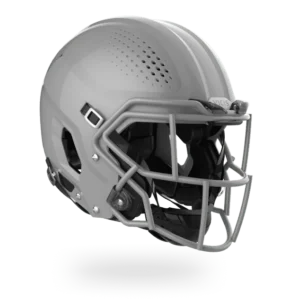CTE in athletics has emerged as a critical concern. This progressive brain disease, primarily caused by repetitive head trauma, commonly affects athletes in contact sports. Understanding CTE’s implications is essential for the safety and well-being of athletes.
The Prevalence of CTE in Athletics
Chronic Traumatic Encephalopathy (CTE) frequently occurs in sports with high risks of head injuries. American football, boxing, and ice hockey are notable examples. Athletes in these sports often endure multiple head impacts, increasing their risk of developing CTE.
A pivotal 2017 study in the Journal of the American Medical Association found a startling prevalence of CTE in the brains of deceased NFL players. Out of 111 players examined, 110 showed signs of CTE. This finding underscores the significant risk in professional football. However, the study’s sample consisted of players who had exhibited symptoms before their death, indicating a possible selection bias.
The Impact of CTE on Athletes
As we grasp the extent of CTE in sports, it’s crucial to understand how it affects athletes. CTE profoundly impacts athletes both during and after their careers. Early symptoms often include mood swings, behavioral changes, and cognitive difficulties. In later stages, athletes may suffer from severe memory loss, impaired judgment, and progressive dementia.
Moreover, CTE’s effects ripple beyond the athletes, touching their families, teams, and the broader sports community. The fear surrounding CTE has led to decreased participation in youth contact sports and fueled a debate about the safety of these activities.
Efforts to Address CTE in Athletics
Recognizing the impacts of CTE leads us to consider how the sports world responds. In light of these concerns, the sports community has taken proactive measures:
- Enhanced Concussion Protocols: Sports leagues have implemented stricter concussion protocols and revised rules to reduce head impacts.
- Advancements in Protective Equipment: Researchers are developing better helmets and protective gear to mitigate the force of impacts.
- Educational Programs: There’s an increased focus on educating athletes, coaches, and parents about the risks and signs of concussions.
- Research and Funding: More funding is now directed toward understanding CTE, its causes, progression, and potential treatments. This research is crucial for developing diagnostic tools for living patients.
Challenges and Future Directions
Despite these efforts, challenges remain, pointing us toward future directions in CTE research and prevention. Diagnosing CTE in living individuals remains a significant challenge. This limitation hampers efforts to link athletic practices to CTE development directly. Comprehensive studies are needed to understand better the prevalence and risk factors of CTE across different sports and levels of play.
As research progresses, we can expect an evolution in our understanding of CTE. This evolution will likely lead to improved safety protocols and treatment options. The ethical debate around contact sports, particularly for young athletes, is also intensifying.
Conclusion
CTE in athletics presents a complex challenge. It necessitates ongoing research, education, and improved safety measures. Balancing the passion for contact sports with the imperative to protect athletes’ health is crucial. The future of these sports will depend on how effectively we can navigate this balance.
Some other relevant information:
What is CTE and Why Athletes Need to Know About It?
What to Know About C.T.E. in Football?
Researchers Find CTE in 345 of 376 Former NFL Players Studied






That 2017 study is obviously biased. They only examined the brains of players who already had symptoms of CTE. It would be better to examine the brains of a random sampling of players and non-players.